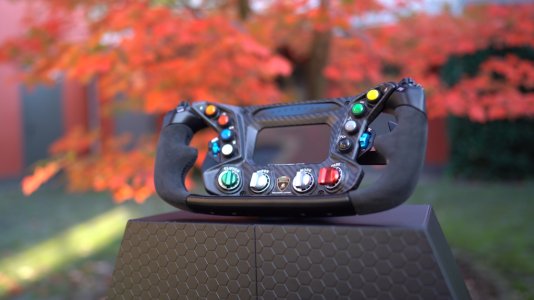The Top Gear test track is used by the BBC automotive television program Top Gear. It is located at Dunsfold Aerodrome in Surrey, United Kingdom. The track was designed by Lotus Cars as a testing facility for the Colin Chapman run company, with many of its Formula One cars tested there. It is used to test both cars and drivers seen on the program, mainly in Power Laps and Star in a Reasonably Priced Car.
Layout
The track is on a former Royal Canadian Air Force airbase constructed during the Second World War and later used by British Aerospace as a manufacturing and test facility. The track's main route, marked by painted lines and simple structures such as stacks of tyres, was designed by test drivers from Lotus. The layout of the track is designed to put the car through various conditions, ranging from provoking understeer to testing brake balance and tyres. The track is approximately 1.75 miles (2.82 km) long. It is considered to be an equaliser for cars since, according to Richard Hammond, both 0–60 miles per hour (0–96.6 km/h) times and top speed are totally meaningless. The track also incorporates a drag strip; although this is not used for timed segments, it does feature in some challenges and other features on the show.
The course starts on the perimeter road outside the Top Gear studio. The first bend is a fast right-left kink named "Crooner Curves." "Willson Bend" is the first proper turn on the track and the first corner usually seen when The Stig is lapping a car. "Chicago", a long right-hand around a tyre wall onto the main runway, was designed by Lotus as a steady state corner, designed to highlight understeer or oversteer of the chassis. Next is "Hammerhead", a left-then-right corner, which again highlights understeer and oversteer. The track comes to a right-hand curve, then the course turns right through the flat-out section called the "Follow Through". After the left hand "Bentley Bend" named after the person who first "discovered" Jeremy Clarkson and former Top Gear presenter, Jon Bentley, but commonly referred to simply as "the tyres", the course comes to "Bacharach Bend", which, after the first series, has been referred to as the "Penultimate Corner" or the "Second-to-last Corner" and is often regarded as one of the most challenging on the course. The final turn before the finish line is "Gambon" in honour of Sir Michael Gambon, who completed the turn on two wheels in episode 8 of Series 1. Prior to this, the corner was known as "Carpenters Corner".
Usage
The track is used routinely for the Star in a Reasonably-Priced Car and Power Laps segments on Top Gear. It also serves myriad roles in other portions of the program, especially in testing cars and in challenges. Cars acquired during challenges must often post lap times (driven by either one of the presenters or The Stig) around the track against either a target time or a time set by The Stig in another vehicle. During many challenges, the track is used in more unorthodox fashion — for instance, serving as a makeshift motorway lane during a challenge testing tailgating prowess with vans. The track is also used for testing cars reviewed on the show or drag races. So far, six Formula One drivers have driven the "Reasonably-priced car" on the show.
Power Laps


Top Gear Test Track
Power Laps is a segment of the programme in which The Stig completes a lap around the track in a reviewed car to compare its performance to previous contenders.
To be eligible to appear on the Power Lap Times board, a vehicle must be a road-legal production car and must have sufficient ride height to clear a standard speed bump (referred to by the presenters as a sleeping policeman), although occasionally vehicles that cannot appear on the list are still timed. Whenever a non-qualifying vehicle is raced, the time is compared to the official Power Laps but then removed from the board. The Ferrari FXX owned by Michael Schumacher (1:10.7) was taken off the board after because it both failed to meet road legal standards and used slick tyres.
All laps are timed with the car's manufacturer-provided adjustable settings configured for maximum performance — all adjustable suspensions are set at their most efficient, all gear shift maps are at their most aggressive, and driving aids such as traction control are deactivated. Lap times do not offer complete comparisons between the cars, mainly because wet or otherwise poor weather conditions (see time deductions below) can negatively affect lap times.










